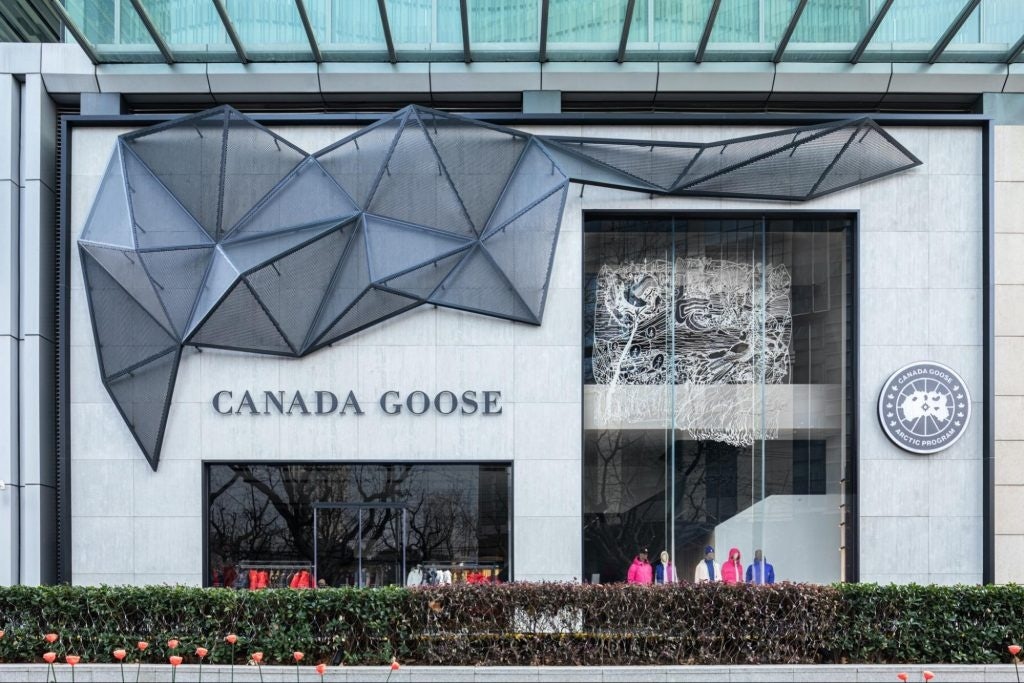At the 75th session of the United Nations General Assembly, President Xi Jinping declared that China will reach its carbon emissions peak before 2030 and achieve carbon neutrality by 2060. Luxury has a role to play in meeting this target, and the mainland strategies of brands like Canada Goose are already closing in on their goals.
Admittedly, Xi's target is ambitious. In 2005, China surpassed the US to become the world's biggest CO2 emitter. However, in June of 2021, China established a climate “leaders group” to pinpoint carbon targets, sending out a message that the country is committed to pursuing this goal.
With the local government’s tightening policies on carbon neutralization, many corporations and brands have been actively working towards reducing their greenhouse emissions. For example, Alibaba turned China’s biggest shopping festival green, Hermès is developing sustainable fabrics made out of mushrooms, and Procter & Gamble now uses recyclable raw materials to produce packaging.
Yet local consumers only recently learned about topics like sustainability and ethical consumption. Consequently, locals have been less receptive to “green” messages. The China Sustainable Fashion Consumer Behaviour Atlas, released by sustainable fashion laboratory R.I.S.E., found that consumers under the age of 20 have a limited understanding of the concept. But that doesn't mean they have a careless attitude towards climate change.
As such, brands must adopt a different approach to engaging with local shoppers. That is why Canada Goose has been applying a distinctive tactic. Instead of simply promoting sustainable identities or achievements, the label has attempted to take local customers on a discovery journey by allowing shoppers to touch, learn about, and see the sustainability process across its online and offline touchpoints, resulting in greater connectivity with the ethical message.
Canada Goose takes consumers on a sustainability journey through HUMANATURE#
In late 2020 Canada Goose launched HUMANATURE, the purpose platform that unites its sustainability and values-based initiatives, spanning every piece of its operations. Canada Goose has created multiple channels for consumers to learn about this ideal, and their WeChat Mini Program is one of the key channels to interact with Chinese consumers. The interface of the HUMANATURE Mini Program shows a lush Canadian forest with the slogan, “We are a part of nature, and nature is a part of us,” inviting the visitor on a journey of discovery.
By clicking on the “explore” button, users get directed to a short video that showcases the Canadian brand’s most sustainable parka yet: the Standard Expedition Parka. In the video, consumers learn about the company’s standards for the future of outerwear. The parka is made with 100-percent responsibly sourced down and an innovative material developed by the company — “Arctic Tech” fabric. Compared to the in-line Expedition Parka, the latter reduces its carbon footprint by 30 percent and water consumption by 65 percent.
Rather than simply responding to shoppers' demands, businesses have a responsibility to educate the consumer about responsible purchase choices. HUMANATURE is regularly updated with the company’s latest initiatives and conscious commitments, meaning viewers can track the brand’s actions in real-time, as with its sustainable impact strategy, where it declared to reach net-zero direct and indirect greenhouse gas emissions by 2025.

Turning sustainability from a company promise into a brand story#
Inspired by its Canadian roots, Canada Goose uses its surrounding landscape as a company imprint. That includes offering support to the neighboring people, wildlife, and resources.
For instance, three-fourths of the polar bear global population lives in the area surrounding the brand's homeland. As such, polar bears have become emblematic of Canada's wildlife heritage. Since 2007, Canada Goose has supported Polar Bears International (PBI) — a team of scientists, researchers, and volunteers working on polar bear conservation and outreach. The brand even launched a Polar Bears International collection that raised over $4 million (CA$5 million) for PBI’s work.

Supporting indigenous communities is another area of focus for Canada Goose. The Inuit people living in the north were the original parka makers, and through Project Atigi (which means “parka” in Inuktitut), the brand celebrates the craftsmanship of the Inuit designers. And by partnering with local craftspeople, Canada Goose has launched an exclusive one-of-a-kind collection to cultivate social entrepreneurship opportunities for the Inuit community.
By giving back to its community and surrounding wildlife, Canada Goose aims to close the loop while creating a real story that carries an authentic message.
Sustainable development is more than corporate social responsibility#
Canada Goose has been long committed to philanthropic endeavors in art and culture, proving that sustainable development is not only about fulfilling corporate responsibility. Specifically, in 2017, through the art program "In-Residence," the brand has brought art by Canadian and Inuit artists, whose work features narratives surrounding the Arctic experience, to 26 global stores thus far.

The past two years have been catastrophic for humanity. In support of the communities in need, in February 2020, Canada Goose donated ¥1 million ($160,000) to Wuhan to support the fight against the epidemic. And in July 2021, Canada Goose donated another ¥1 million ($160,000) to Henan to support flood control relief and post-disaster reconstruction. In a release, Dani Reiss, President & CEO of Canada Goose said, “The role of business has evolved — in today’s world, driving meaningful change is just as important as the bottom line.”
Also, the company chose to collaborate with the emerging talent in China. In 2021, it selected Angel Chen to help celebrate its technical comfort with stylish Chinese designs. This domestic talent is renowned for masterfully blending Chinese traditions with Western aesthetics, and the partnership was so successful and the brand and designer collaborated again.

Regarding sustainable luxury, brand efforts should go beyond well-crafted garments; they should also give back to the community — a goal they can achieve through the patronage of local collaborations or causes, both of which Canada Goose pioneers.
